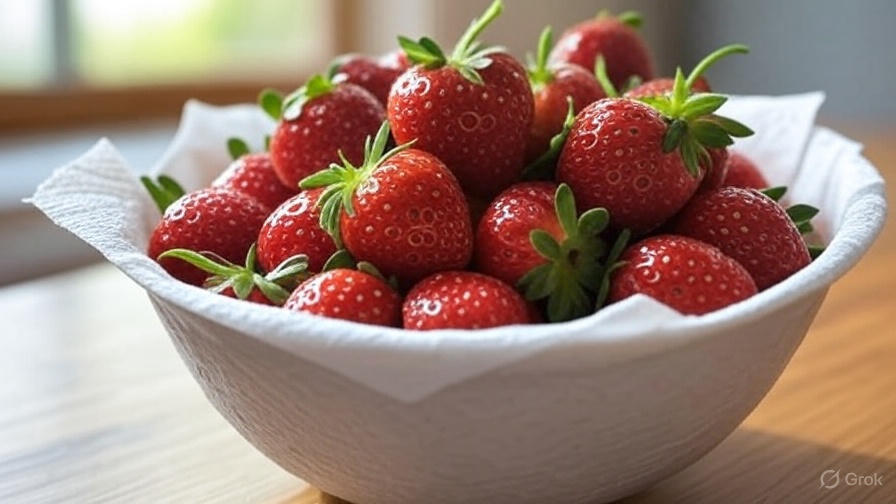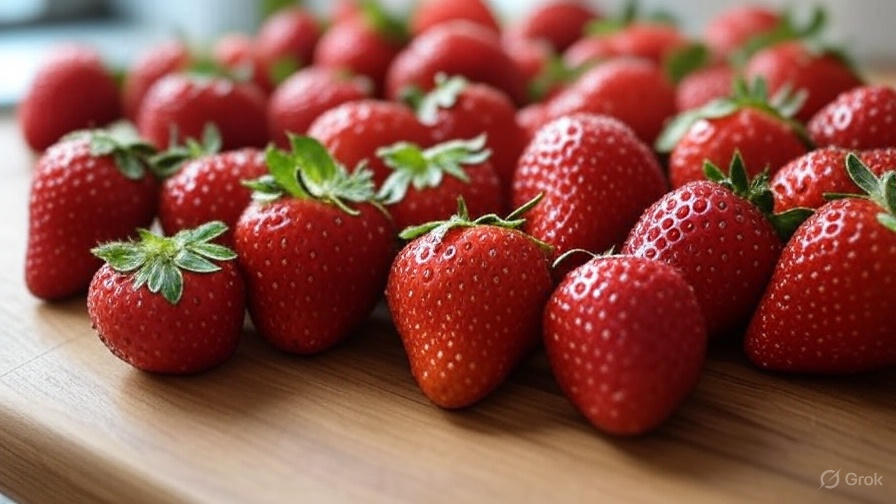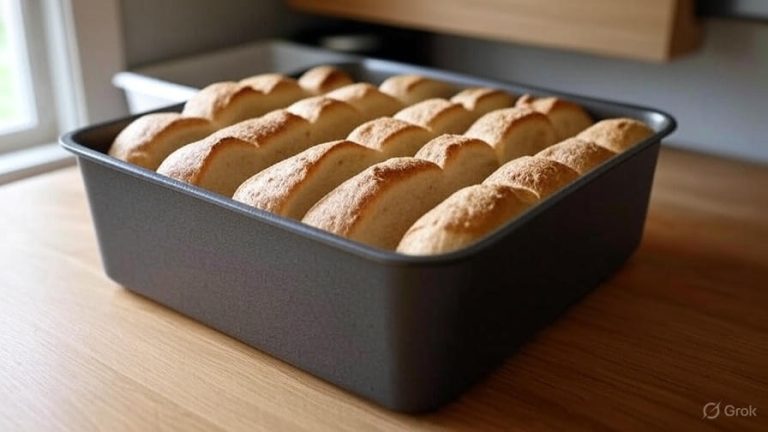How to Keep Strawberries Fresh?
Strawberries rank among the most beloved fruits worldwide, but their delicate nature makes them prone to spoilage. You’ve likely experienced the frustration of buying beautiful, ripe strawberries only to find them moldy or mushy within days. This comprehensive guide reveals proven methods to keep your strawberries fresh longer, saving you money and ensuring you always have delicious berries on hand.
The Science Behind Strawberry Spoilage
Fresh strawberries contain high water content and natural sugars that create an ideal environment for bacterial growth and mold development. Unlike many fruits, strawberries don’t continue ripening after harvest, which means they begin deteriorating immediately once picked. The key factors that accelerate spoilage include moisture, temperature fluctuations, and exposure to air.
Berries release ethylene gas as they age, which speeds up the ripening process of nearby fruits. This natural process explains why one bad strawberry can quickly affect the entire container. The soft texture of strawberries also makes them vulnerable to bruising, which creates entry points for bacteria and fungi.
Selecting the Best Strawberries for Maximum Freshness
Your strawberry preservation journey begins at the store or farmer’s market. Look for berries with bright red color, fresh green tops, and firm texture. Avoid strawberries with white or green areas, as these indicate the fruit was picked before peak ripeness. The best strawberries have a natural shine and feel heavy for their size.
Inspect the container carefully before purchasing. Check the bottom for signs of moisture or staining, which indicates damaged berries inside. The packaging should be clean and dry, without any moldy or overripe berries visible. Small to medium-sized berries often have better flavor and longer shelf life than oversized ones.
Fresh strawberries emit a sweet, fruity aroma. If the berries smell fermented or overly sweet, they may be past their prime. The green caps should look fresh and vibrant, not wilted or brown. These visual and aromatic cues help you start with the highest quality berries possible.
Proper Storage Techniques for Extended Freshness
Refrigerator Storage Method
The refrigerator remains the best place to store fresh strawberries. Set your refrigerator temperature between 32-36°F (0-2°C) for optimal results. Place strawberries in the crisper drawer, which maintains higher humidity levels that berries need to stay fresh.
Keep strawberries in their original container or transfer them to a breathable container with air holes. Avoid sealed plastic bags, which trap moisture and accelerate spoilage. Line the container with paper towels to absorb excess moisture, changing them every few days if they become damp.
Store strawberries away from ethylene-producing fruits like apples, bananas, and avocados. These fruits release gases that cause strawberries to deteriorate faster. Keep berries in a single layer when possible, as stacking can cause pressure damage and bruising.
Counter Storage for Immediate Use
If you plan to eat strawberries within 24 hours, counter storage works well. Place berries in a single layer on a paper towel-lined plate or tray. Keep them in a cool, dry area away from direct sunlight and heat sources. This method allows berries to maintain their flavor and texture for short-term storage.
Room temperature storage works best for fully ripe berries that you want to consume quickly. The warmer temperature enhances the natural sweetness and aroma of the fruit. However, never leave strawberries at room temperature for more than two days, as spoilage accelerates rapidly in warm conditions.
Freezer Storage for Long-Term Preservation
Freezing strawberries extends their life for several months, though it changes their texture. Wash and hull the berries before freezing. Pat them completely dry with paper towels to prevent ice crystals from forming. Arrange berries in a single layer on a baking sheet and freeze for 2-3 hours until solid.
Transfer frozen berries to airtight freezer bags or containers, removing as much air as possible. Label containers with the date and use within 8-12 months for best quality. Frozen strawberries work perfectly for smoothies, baking, and cooking applications where texture isn’t crucial.
For whole berry freezing, choose firm, ripe strawberries without soft spots. Slightly underripe berries freeze better than overripe ones. You can also slice berries before freezing if you prefer smaller pieces for recipes.
Washing and Preparation Best Practices
When to Wash Strawberries
Timing matters when washing strawberries. Wait to wash berries until just before eating or using them in recipes. Washing strawberries too early removes their natural protective coating and introduces excess moisture that promotes spoilage. The natural waxy coating on strawberries helps preserve freshness and prevents bacterial growth.
If you must wash berries in advance, dry them thoroughly with paper towels and use them within 24 hours. Pre-washed berries deteriorate much faster than unwashed ones, even when stored properly in the refrigerator.
Proper Washing Technique
Use cold water to rinse strawberries gently. Fill a large bowl with cold water and add the berries, swishing them gently to remove dirt and debris. Avoid soaking berries for extended periods, as they absorb water and become mushy. A quick rinse of 30 seconds or less works best.
Some people add a tablespoon of white vinegar to the washing water to kill bacteria and extend freshness. This method can help remove pesticide residues and surface contaminants. Rinse thoroughly after the vinegar wash to remove any lingering taste.
After washing, hull the strawberries by removing the green tops with a small knife or strawberry huller. Cut away any soft spots or damaged areas, as these can spread to healthy parts of the berry. Pat berries dry with paper towels or a clean kitchen towel before using or storing.
Signs of Spoilage to Watch For
Learning to identify spoiled strawberries helps prevent contamination of fresh berries. Look for soft, mushy spots that feel different from the firm texture of fresh berries. These areas often appear darker and may have a wrinkled appearance. Mold appears as fuzzy white, gray, or green growths on the surface of berries.
The aroma changes as strawberries spoil. Fresh berries smell sweet and fruity, while spoiled ones develop a fermented, alcoholic, or sour odor. The smell becomes more pronounced as deterioration progresses. Trust your nose – if berries smell off, they probably are.
Color changes also indicate spoilage. Fresh strawberries maintain their bright red color with clear definition. Spoiled berries become darker, duller, or develop brown spots. The green caps turn brown or black when berries are past their prime.
Texture provides another important clue. Fresh strawberries feel firm and spring back when gently pressed. Spoiled berries feel soft, mushy, or leak juice when handled. The surface may appear slimy or sticky to the touch.

Creative Ways to Use Strawberries Before They Spoil
Immediate Consumption Ideas
Make strawberry smoothies using berries that are getting soft but not spoiled. Blend with yogurt, milk, or juice for a nutritious drink. Soft strawberries work perfectly in smoothies since texture doesn’t matter once blended. Add other fruits like bananas or mangoes for variety.
Create fresh strawberry sauce by cooking berries with a small amount of sugar and lemon juice. This sauce works wonderfully over pancakes, ice cream, or yogurt. The cooking process eliminates texture issues with slightly overripe berries while concentrating their flavor.
Strawberry compote offers another excellent option for berries that are getting soft. Simmer berries with sugar and a splash of water until they break down into a thick, jam-like consistency. This compote keeps in the refrigerator for up to two weeks and adds flavor to breakfast items and desserts.
Baking and Cooking Applications
Bake strawberry muffins, bread, or scones using berries that are past their prime for fresh eating. The baking process masks texture issues while delivering intense strawberry flavor. Toss berries in flour before adding to batter to prevent them from sinking to the bottom.
Make strawberry jam or preserves to preserve berries for months. The high sugar content and cooking process eliminate spoilage concerns while creating a delicious spread. Homemade jam tastes much better than store-bought versions and makes excellent gifts.
Strawberry pie or tart utilizes berries that might be too soft for fresh eating. The cooking process softens all berries equally, creating a consistent texture throughout the dessert. Fresh strawberry pie showcases the natural flavor of the fruit beautifully.
Troubleshooting Common Storage Problems
Moisture Control Issues
Excess moisture causes strawberries to spoil rapidly. If you notice moisture building up in storage containers, add fresh paper towels to absorb humidity. Change paper towels every 2-3 days to maintain optimal moisture levels. Perforated containers allow air circulation while preventing complete moisture loss.
Condensation inside storage containers indicates temperature fluctuations. Check your refrigerator temperature and ensure it remains consistent. Avoid placing strawberry containers near the refrigerator door, where temperature changes occur frequently when the door opens.
Preventing Cross-Contamination
Remove any spoiled berries immediately upon discovery. One moldy strawberry can contaminate an entire container within hours. Check stored berries daily and remove any that show signs of spoilage. This simple step dramatically extends the life of remaining berries.
Store strawberries separately from other fruits and vegetables when possible. Many produce items release ethylene gas, which accelerates strawberry ripening and spoilage. Keep berries in a dedicated area of your refrigerator away from other produce.
Temperature Management
Consistent temperature control prevents strawberry spoilage. Avoid leaving berries in warm cars or on hot counters, even briefly. The temperature shock from warm to cold environments can damage cell structure and accelerate deterioration.
Monitor your refrigerator temperature regularly with a thermometer. Temperature fluctuations stress strawberries and reduce their shelf life. The ideal storage temperature remains between 32-36°F (0-2°C) for maximum freshness.
Maximizing Strawberry Shelf Life: Advanced Tips
Container Selection Strategies
The right container significantly impacts strawberry freshness. Ventilated containers allow air circulation while preventing moisture buildup. Avoid completely airtight containers, which trap humidity and promote mold growth. Look for containers with small holes or slits that provide airflow.
Glass containers work well for strawberry storage because they don’t absorb odors or flavors. They also allow you to see the berries easily for quality monitoring. Plastic containers with ventilation holes offer a lightweight alternative that provides good airflow.
Humidity Control Methods
Maintain optimal humidity levels around 90-95% for strawberry storage. The refrigerator crisper drawer typically provides this humidity level. If your crisper drawer has humidity controls, set it to high for berry storage. This environment prevents berries from drying out while avoiding excess moisture that promotes spoilage.
Silica gel packets can help control moisture in storage containers. Place one or two packets in the container with strawberries to absorb excess humidity. Make sure packets don’t directly touch the berries, as they’re not food-safe if opened.
Rotation and Inventory Management
Practice first-in, first-out rotation with your strawberry supply. Use older berries before newer ones to minimize waste. Label containers with purchase dates to track freshness. This system ensures you always use the oldest berries first, preventing spoilage.
Plan your strawberry purchases based on consumption patterns. Buy only what you can realistically use within the expected shelf life. Fresh strawberries typically last 5-7 days in the refrigerator when stored properly, so plan accordingly.
Conclusion
Keeping strawberries fresh requires attention to detail and proper storage techniques. Start with high-quality berries, store them at the right temperature and humidity, and monitor them regularly for signs of spoilage. The methods outlined in this guide will help you enjoy fresh, delicious strawberries for longer periods while reducing waste and saving money.
Remember that strawberry freshness begins with smart shopping and continues through proper storage and handling. By implementing these strategies, you’ll maximize the life of your strawberries and always have fresh berries available for snacks, recipes, and special occasions. The investment in proper storage techniques pays dividends in both flavor and cost savings over time.







